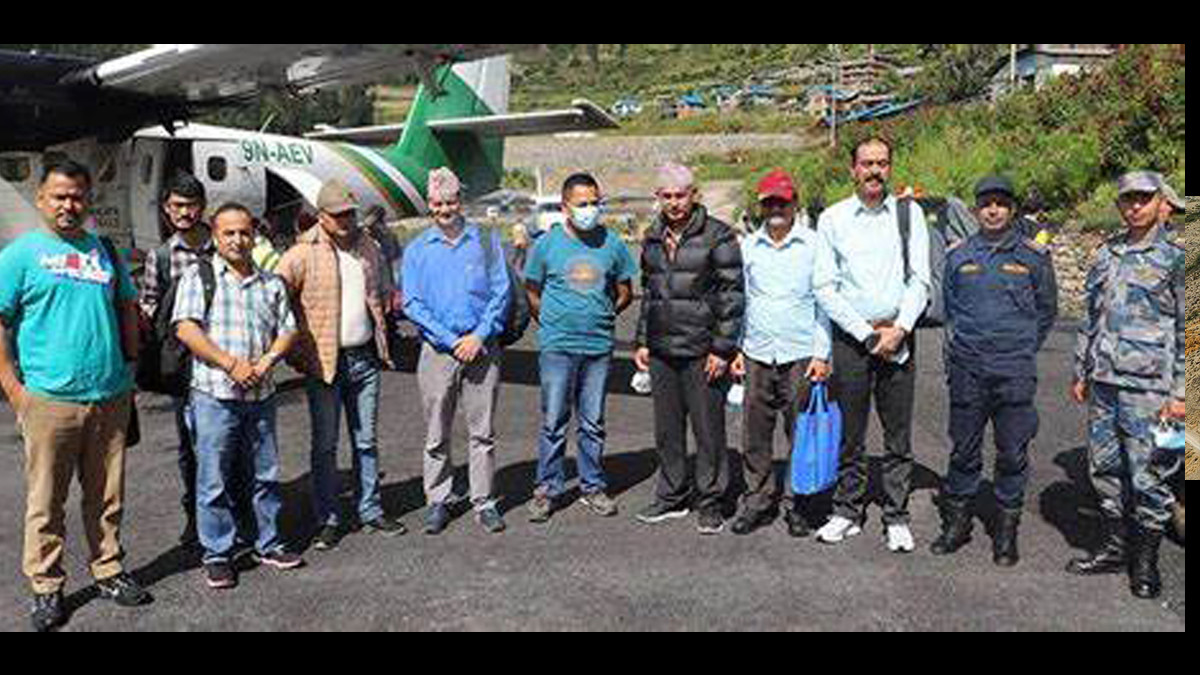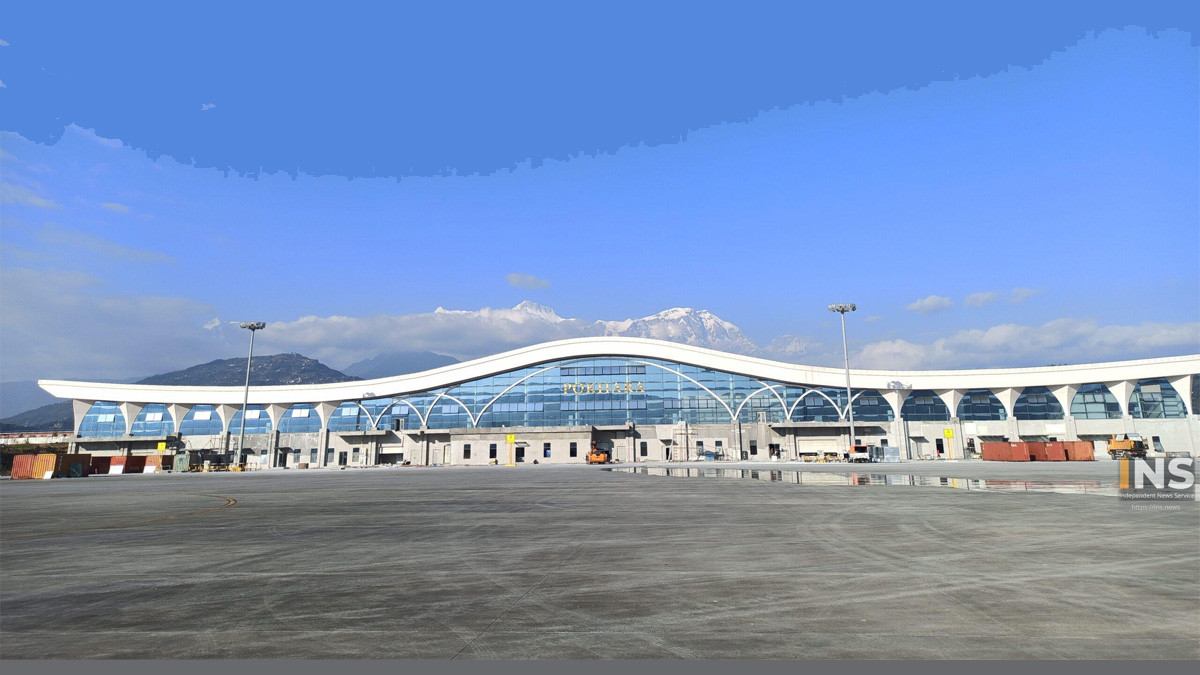
The government has decided to send a team to Namkha in Humla, which borders China, to study whether Nepali territory has been encroached or not. For the study, the Council of Ministers decided to form a high-level task force comprising Nepal Police, Armed Police Force, officers of the Survey Department and border experts under the coordination of the Joint Secretary of the Ministry of Home Affairs.
Congress leader and former Deputy Prime Minister Bimalendra Nidhi and Karnali Pradesh Congress parliamentary party leader and central member Jeevan Bahadur Shahi had been saying that Nepali territory was encroached from China in Namkha and that it should be studied. The government has formed a study team to address their demands.
Both leaders demanded that the government investigate the matter. Prime Minister Sher Bahadur Deuba has decided to form a study task force from the cabinet meeting .
Border disputes between Nepal and China have been discussed from time to time. But, is it true that China has encroached on Nepal's territory? If encroached, how much land is occupied? The government has not confirmed the details.
Earlier, even during the time of the then Prime Minister KP Sharma Oli, news was published that China had encroached on Nepali territory in Humla and other districts of Nepal for years. However, after the news was published, the government denied it.
The Ministry of Foreign Affairs had issued a statement saying that China had not submerged Nepal's land. However, the present government has formed the task force as per the demand raised at that time. The report will be submitted to the government after studying whether China has encroached on Nepal's territory.
In 1979, the map was prepared on the basis of the treaty on Nepal-China border, original script and aerial photography. The same map was passed by the task force of both the countries in 1982. The same map has so far been used as the official map for demarcating the Nepal-China border. To the north of Nepal, China has a border of 1,414 kilometers.

Thus began the discussion of encroachment
In August, 2020, Assistant Chief District Officer of Humla Dattaraj Hamal accompanied by Village Municipality Chairman Bishnu Bahadur Tamang and Chief Administrative Officer Dharmaraj Neupane went to Limi of Namkha Municipality.
The Namkha Municipality had organized a program to conduct integrated camp operation and on-site monitoring of the schemes in Limi on 19 August. Some locals, including the helper Hamal, went to Mansarovar from Limi. After visiting Mansarovar from Lolungjong in the Limi Valley, he saw a new building being constructed in the area.
After inquiring with the locals, he found out that the building was built by China. He had taken a photo of the building after the locals said that the building was built by China by encroaching on Nepali territory. After that, Hamal returned to the district headquarters Simikot and told some media persons that China had crossed the border.
After the news came in the national media, this issue got a lot of discussion. So far, this is a completely new revelation as news is coming that India has crossed the territory only to the south of Nepal. Therefore, some angry groups even chanted slogans in front of the Chinese Embassy in Kathmandu.
The government and the Chinese embassy in Nepal had to give an explanation after seeing the ups and downs in the bilateral relations. At that time, the Ministry of Foreign Affairs and the Chinese Embassy also issued a statement stating that China had not encroached on Nepal's territory.

Where is the charge of encroachment?
According to the details that came in the media at that time but could not be confirmed, about 1,456 ropanis of five Himalayan districts and one Nepali village each of Gorkha and Darchula have been encroached by China. 99 ropanis in the northern part of Dolakha and 64 hectares (1257.6 ropanis) of Nepali land in Humla, Sindhupalchok, Sankhuwasabha and Rasuwa have also been under Chinese encroachment for years.
Similarly, the Nepali villages of Gorkha and Darchula on the Chinese side have not been able to reveal how much area has been encroached due to lack of measurement. The border post number 57 in Korlang area of Bigu Gaonpalika-1 of Dolakha has been placed 1500 meters towards Nepal at the base instead of the previous place (top of Korlang area). It was reported in the media at that time that the fourth protocol could not be signed.
A team of Human Rights Commission members Govind Sharma Poudyal and Mohna Ansari also conducted an on-site study of the border area from 2072 to 2076. According to the report released after the study, 99 ropanis of Nepali territory has been encroached upon, which the commission had ordered to take diplomatic initiative for its return.
Similarly, 35, 37 and 38 border posts in Gorkha and 62 border posts in Nampa Bhanjyang of Solukhumbu were reported missing citing various reports. According to media reports, Rui village in northern Gorkha has been under Chinese encroachment for 60 years and 18 houses in Jiujiu area of Darchula.
It is stated in the report that due to the change in the flow of rivers and streams which are considered as borders, geographical remoteness and lack of human settlement, the loss of the border pillar has led to Chinese occupation of Nepali territory. Border talks have been held between Nepal and China since 2005.

Why border dispute in Namkha?
The government has sent a team to Namkha in Humla, which shares a border with China, to study whether Nepali territory has been encroached or not. Most of the lands of Namkha Village Municipality Ward No. 5 and 6 fall in the border area between Nepal and China.
There is plateau land towards Tibet. Since there is no snow and the wind is not so strong, Nepalis have been moving towards it. After the border agreement between China and Nepal, Nepal's grazing area was in China. Due to which, there was a problem in raising livestock in Limi area. When King Birendra visited Humla in 2036 BS, the locals had raised this issue.
After that, during Birendra's visit to China, there was a discussion about allowing Nepal to roam. After that, a grazing agreement was reached between the two countries regarding the grazing area of Limi and Muchu. According to this, the residents of these two places were allowed to keep and graze their livestock in the Chinese territory. There was an agreement that Nepalis should pay churpi and ghee as tax for keeping such.
Boundary disputes in this area seem to have started from 2017. According to the locals, there was a dispute between the citizens of both the countries about the plateaus including Lolungjong of Limi Valley. Later, when an agreement was reached between the two governments, many plateaus around Kailash Mansarovar, including Lolungjong, came under Chinese ownership.
Border expert Budhinarayan Shrestha has also mentioned in his book titled 'Border of Nepal' that 'we (Nepali side) have lost a lot of territory in the north due to our inability to protect it.
As per the agreement to demarcate the border between the two countries in 2019 BS, 15 pillars were erected in Humla with 10 main and 5 auxiliary. The same pillar has now secured the border between the two countries. According to the records of District Administration Office, Humla, there are main pillars numbered 3, 4, 5, 6 (1), 7 (1), 8 (1), 9 (10), 10, 11 and 12 and 5 (2), 6 (2). There are 7 (2), 8 (2) and 9 (2) auxiliary pillars.
Its distance is from 800 meters to 30 kilometers. The Government of Nepal had also established a Border Administration Office in Humla in 2036 BS. The question now is whether China has really encroached on Nepal's territory in that area. That is why the government has formed a task force to study it.

Wave formed by task force
Boundary disputes and even land encroachments are extremely sensitive issues in any country. It is not even a tolerable issue for the citizens of the encroached country. Nepal has a long-running border dispute with India. Border disputes between Nepal and India have been taking place due to the flat terrain and open border to the south.
Although less public and popular than India, North China has reportedly encroached on Nepal's territory from time to time. Due to which the agitating Nepalis surround the embassy and protest.
It has a big impact not only on the citizen level but also on the diplomatic level of the country. Some time ago, Nepal had made public a new map claiming Kalapani, Lipulek, Limpiyadhura and other areas as its own. This created a big rift between Nepal and India. Dissatisfied with Nepal's move, Nepal's relations with India have not improved much.
The same thing applies with China. When China's border dispute with Nepal is unresolved and only discussed, it could lead to a rift in bilateral relations. The government has formed a task force to study the border dispute with China, which has caused a stir. It remains to be seen how China will respond.
However, Nepal should start resolving border issues with both India and China as soon as possible. Long-term solutions must be found to prevent such disputes in the coming days. For example, the task force formed to study the border dispute at Namkha in Humla now needs to be summed up. It would not be good for the government to come to a point where the dispute will escalate again if it does not reach a point.
(This material has been prepared with the help of news and articles published in various media for over a year. This article is dedicated to the late Balram Baniya, a senior journalist of Kantipur Rashtriya Dainik, who wrote a clear article on this subject for the first time.)










